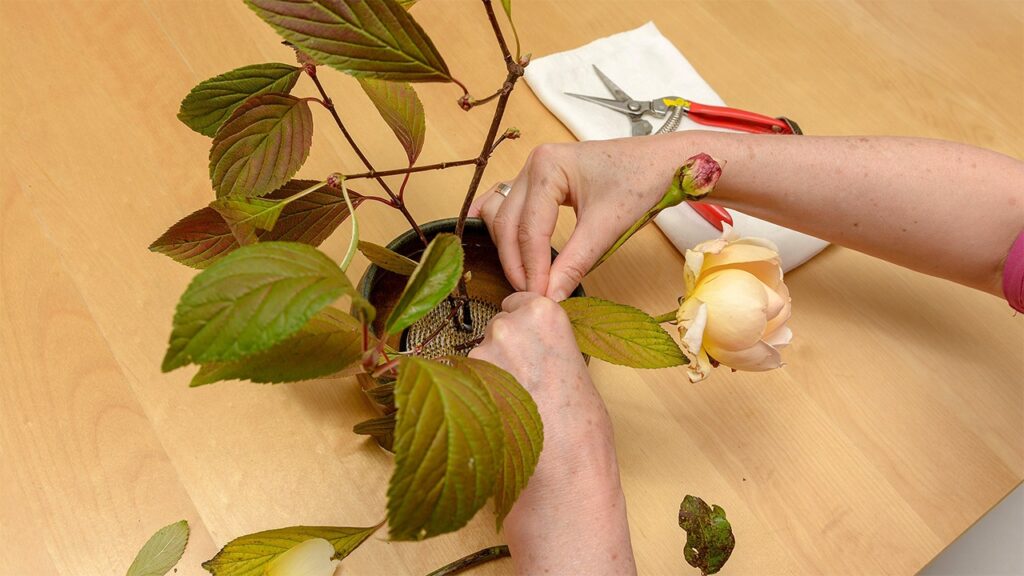
Ikebana, "arranging flowers" or "making flowers alive" is the Japanese art of flower arrangement.
It is also known as kadō, “way of flowers”). The tradition dates back to the Heian period (794 – 1185 AD), when floral offerings were made at altars. Later, flower arrangements were used to adorn the tokonoma (alcove) of a traditional Japanese home. Ikebana reached its first zenith in the 16th century under the influence of Buddhist tea masters and has grown over the centuries, with numerous distinct schools today. It is counted as one of the three classical Japanese arts of refinement, along with kōdō (for incense appreciation) and (chadō) for tea and the tea ceremony. Ikebana arrangements are not unlike sculpture. Considerations of color, line, form, and function guide the construction of a work. The resulting forms are varied and unexpected, and can range widely in terms of size and composition, from a piece made from a single flower to one that incorporates several different flowers, branches, and other natural objects.
